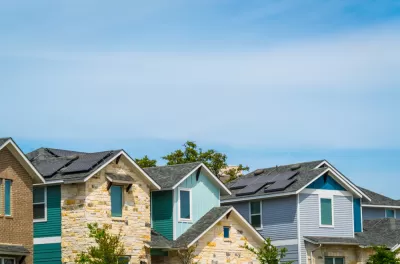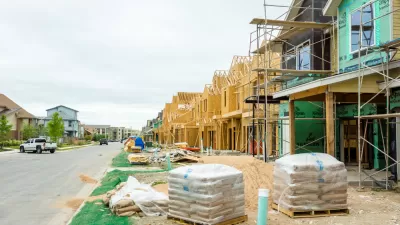An expansion of the city’s vertical mixed-use (VMU) affordable development program is the furthest along of a package of reforms intended to spur the construction of affordable housing.

The Austin City Council is in the process of drafting, amending, and weighing multiple changes to the city’s zoning code in the hopes of spurring new affordable housing developments without triggering too much political controversy along the way. The city is faced with an affordability crisis that rivals anything in California or New York.
According to an article by Ben Thompson for the Community Impact Newspaper, those measures include a height bonus for affordable housing developments, parking requirement reductions, ADU streamlining, and more.
Closest to the finish line, according to Thompson, is an expansion of the city’s vertical mixed-use (VMU) affordable development program. “The VMU change would create a new category within the program that offers development incentives such as increased height in exchange for affordable housing. Proposed by District 5 Council Member Ann Kitchen late last year, an update called VMU2 would increase the allowed height for participating projects if more affordable units are offered.”
According to data from the city cited in the article, the VMU is the second-most effective development incentives, “second only to the University Neighborhood Overlay, which has spurred denser construction in the West Campus area.” According to the data, the VMU has created nearly 6,800 total housing units. Another 8,900 units are planned or under construction—of which 1,000 will be available at an affordable price.
More details on the other zoning changes under consideration as development incentives can be found in the source article, linked below.
FULL STORY: Council looks to 'push the envelope' on Austin affordable housing policies ahead of June votes

Alabama: Trump Terminates Settlements for Black Communities Harmed By Raw Sewage
Trump deemed the landmark civil rights agreement “illegal DEI and environmental justice policy.”

Planetizen Federal Action Tracker
A weekly monitor of how Trump’s orders and actions are impacting planners and planning in America.

The 120 Year Old Tiny Home Villages That Sheltered San Francisco’s Earthquake Refugees
More than a century ago, San Francisco mobilized to house thousands of residents displaced by the 1906 earthquake. Could their strategy offer a model for the present?

In Both Crashes and Crime, Public Transportation is Far Safer than Driving
Contrary to popular assumptions, public transportation has far lower crash and crime rates than automobile travel. For safer communities, improve and encourage transit travel.

Report: Zoning Reforms Should Complement Nashville’s Ambitious Transit Plan
Without reform, restrictive zoning codes will limit the impact of the city’s planned transit expansion and could exclude some of the residents who depend on transit the most.

Judge Orders Release of Frozen IRA, IIJA Funding
The decision is a victory for environmental groups who charged that freezing funds for critical infrastructure and disaster response programs caused “real and irreparable harm” to communities.
Urban Design for Planners 1: Software Tools
This six-course series explores essential urban design concepts using open source software and equips planners with the tools they need to participate fully in the urban design process.
Planning for Universal Design
Learn the tools for implementing Universal Design in planning regulations.
Clanton & Associates, Inc.
Jessamine County Fiscal Court
Institute for Housing and Urban Development Studies (IHS)
City of Grandview
Harvard GSD Executive Education
Toledo-Lucas County Plan Commissions
Salt Lake City
NYU Wagner Graduate School of Public Service





























